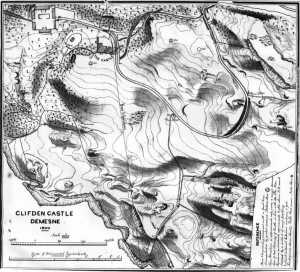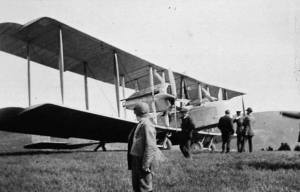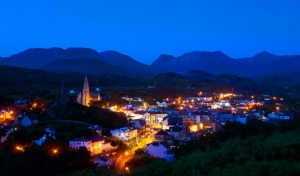
Breandan O'Scanaill
Breandan O Scanaill was born in Clifden and has spent all his life here, exploring the many facets of the surrounding countryside.
Brendan always had a huge interest in the history of the place and he is particularly interested in the social aspect of the history. Trade and commerce, architecture and engineering are subjects which fascinate him.
Being an avid gardener and especially as Breandan is restoring an early 19th century garden, he has a passion for all aspects of the horticultural history of the region. He lectures regularly on the history of gardening in Connemara, both to gardening groups and historical societies.
As well as lecturing, Breandan writes for various papers and journals and has recently launched a book on the protected structures of Connemara.
Website URL: E-mail: This e-mail address is being protected from spambots. You need JavaScript enabled to view it
The end of the 18th century and the early 19th century was the boom time for Irish gardens. Before this the situation within the country was not conducive to the construction of gardens. Obviously there would have been some gardens and most houses would have had vegetable gardens, but the idea of pleasure gardens was novel.
As the large estates began to be developed the formal park and walled garden came into vogue, you can find these estates all over the country, a good many are open to the public. Connemara on the other hand had no such large estates. Certainly the Martin estate was large, in fact one of the largest in these islands, but they were chronically short of money and probably enjoyed the rugged outdoors rather than any formality.
Trees and shrubs as well as herbaceous plants began to sweep the country, this plant material arrived from the four corners of the globe. The British empire was beginning to expand and many Irish were amongst those working or soldiering in foreign lands. On top of that the professional plant hunters were sending vast amounts of plant species back to the homelands. Naturally some of these trees and plants, moved west and the various landlords would have tried to outdo each other with their exotic plants. There are some fine old specimen trees in different estates in the area outside of Galway, and even a few in Connemara.
I like to think that John D’Arcy of Clifden Castle would have been one of the first landowners to have created a garden, in this area. When he built his castle in the early years of the 1800’s he planted trees to act as both shelter belts protecting him from the westerly gales, and to beautify his park. He would have been familiar with good horticultural practices from his estate in Kiltullagh in east Galway, which was surrounded by other model estates.
According to Hely Dutton in his “A Statistical and Agricultural Survey of the County of Galway” of 1824, Mr D’Arcy is an improving landlord who carries out all the best practices in land management. Hely Dutton should know about these things as he is described as a landscape gardener and land improver.
He mentions John D’Arcy frequently as in this section on the cultivation of green crops. “I may have omitted the names of others who know the value of green food, but I trust the good sense of the gentlemen of the county will before long, prompt them to pursue this very profitable branch of rural economy.”
Later he praises him on horse breeding. “Mr D’Arcy of Clifden has acted more judiciously; he procured a very beautiful small sire, who I am informed has left a very improved breed in Cumamara (sic). It is thought that the general breed of horses in this county is far from improving.”
He is also full of praise for Thomas Martin, well almost full. “The country about Ballynahinch the seat of Thomas Barnwell Martin Esq. is extremely bold and highly picturesque, totally different from any thing to be met with in any other part of this county. I am grieved to say, that nature has all the merit; she has had little assistance, though an almost constant residence for upwards of fifty years would lead one to expect that a small part at least of a large income would have been annually expended in improvements. Mr Thomas Martin, who is a young man, and has only lately got possession of Ballynahinch, is, as I am informed making preparations to plant extensively …….. But from Mr Thomas Martin’s love for planting, and every improvement, we may hope Ballynahinch may become what it should have been.”
Getting back to Clifden Castle, we find a reference to the gardening skills of John D’Arcy in Samuel Lewis’s A Topographical Dictionary of Ireland from 1837. “At a short distance, on the northern side of the town, is Clifden Castle, the delightful residence of John D'Arcy, Esq., the proprietor of the district, by whom it was erected. It is a castellated house standing on the verge of a fine lawn sloping down to the bay, and sheltered behind by woods and a range of mountain; the view to the right embraces a wide expanse of ocean. The pleasure grounds comprise about fifteen acres, and are adorned with a grotto of considerable extent, through which passes a stream, and with a shell-house or marine temple, composed of shells, spar, ore, &c.; though on the shore of the Atlantic, the trees and shrubs flourish luxuriantly.”
This description gives us a picture of a typical 18th century parkland setting, John was obviously influenced by the style of gardening in vogue at the time of his birth. It is fascinating to see that some of the structures mentioned in the above description are still standing. Sad to say very few of the trees mentioned are still in existence, but a number are of great age. As we can see from the map of the castle, albeit from a much later time, these features are still visible.
One plant Valerinia Pyranica, or Pyrenean Valerian, which still grows in the area and in my garden in particular, dates from that time. According to the book, Plants of Connemara and the Burren, by David Allardice Webb and Mary JP Scannell, the first mention of this plant is growing at Clifden Castle in 1835.
A number of other gardens in the area date from the early years of the 1800’s. Cashel House Hotel, has one of the oldest and most distinguished gardens in the area. Some of the exotic trees growing here are reputed to have been planted in the late 1700’s. The present house and garden date from the middle years of the 19th century. It has always been fortunate that the various owners have been passionate about gardens, and the collection of trees and shrubs have grown since those early years.
The D’Arcy houses, Glenowen, now the Abbeyglen Castle Hotel has a number of fine trees from the early years, Malmore is a well wooded estate and Glen Ierene, now Gleann Aoibheann, has many original trees and plants. A quick tour of Connemara, will show you the places where these old estates were built, as they are the few places where you will find trees. Errislannan Manor would be contemporary to these other gardens.
Of course the great era for gardening in Connemara, was the late 19th century, with the most important garden ever constructed in the area, this is of course Kylemore Castle, now Kylemore Abbey. This large and interesting garden was built by Mitchell Henry in the late 1860’s, At some other time I will give more time to this marvellous garden which is being restored.
Breandan O Scanaill.
Breandán O’Scanaill traces the flight of Alcock and Brown and outlines the conditions prevailing in Clifden at the time.
On June 15th 1919, Alcock and Brown crash landed their Vickers Vimy aircraft in Derrygimla Bog just south of Clifden, after their harrowing sixteen hour flight from St. John’s, Newfoundland. An exciting new link had been forged between the old and the new world.
These two gallant RAF airmen, Capt. John Alcock and Lieut. Arthur Whitten-Brown, had set off from St. John’s the day before, Saturday June 14th in a two-seater bi-plane. This aircraft, a Vickers Vimy, had been designed to fly long range bombing missions, and a lot of modifications were needed for the attempt of the transatlantic flight, including doubling the flight endurance to twenty hours. Fuel capacity had to be increased to 865 gallons. It was powered by two Rolls-Royce Eagle VIII engines of 360 horse power each. After test flights in England the aircraft was dismantled and shipped to St. John’s, arriving there on May 26th. Then began the task of reassembly, which was hampered by bad weather, but once completed a number of test flights took place and the craft was declared ready to make the awesome journey.
The start of the flight was relatively trouble-free, apart from a prolonged take-off, but soon they ran into problems. Fog and cloud reduced visibility and Brown needed clear skies to navigate reliably. Still they pressed on. Next, the radio failed, and the starboard exhaust and silencer disintegrated making conversation impossible.
Weather conditions were also getting worse and the craft was thrown about. Battered by hail, both men feared that the aircraft’s fabric would be torn. Alcock lost his bearings at one stage and the plane went into a spin and fell 4,000ft Struggling to regain control, he succeeded in doing so just 50ft from the sea! As the rain turned to snow, the controls began to freeze up. On six occasions, Brown had to leave the cockpit and manually clear ice from critical parts of the aircraft.
Deciding to land in County Galway, they turned slightly south of their course and made landfall just over Turk and Turbot islands at the entrance of Clifden Bay, flying over the Marconi Wireless Station, where they tried unsuccessfully to attract attention. They then headed for Clifden where they circled around the town, observed by quite a number of townspeople. Hoping to find a suitable landing site they returned to the Marconi Station and understandably mistook a stretch of bog for a smooth green landing strip. Although the nose of the plane sunk into the bog neither Alcock nor Brown suffered serious injury and their place in aviation history was secured. A cheque for £10,000, being the prize offered by THE DAILY MAIL, also awaited them in London.
The very spot where they landed had played its own part in the pioneering of intercontinental communications, for here on October 17th 1907, the first commercial wireless messages were transmitted and received. The Marconi Wireless Station had been set up on this exposed site on the west coast of Ireland in 1905. It had taken two years to build and was a major undertaking. As well as building the various structures needed to provide accommodation for the workers, they had to build a generating plant which provided the power needed to run the station and a condenser house which was 350ft long by 75ft wide.
The aerial for the transmitter was made up of eight wooden masts each approx. 310ft high on which the wires were suspended. They also built a light railway which was used to carry supplies from the main road at Ballinaboy, as well as transporting turf from the surrounding bogs. This turf was used to fire the six steam engines which produced the power.
There was a permanent staff of around one hundred and fifty and part time staff, mainly turf cutters, of around one hundred and forty. Wages were high and Clifden benefited from this.
The capital of Connemara had come a long way since the bad old days of the famine times, the large scale emigration, the religious agitations and the land war. Clifden reflected this wealth with a range of shops and hotels, which were not to be found in other parts of the country. We also find trades of many kinds listed in the census forms of the time such as, shoe and boot makers, fishmongers, coopers, blacksmiths, tailors, dress-makers, coach-makers, butchers, bakers, wool-weavers, boat makers and masons. These show that the area, as well as being self-sufficient, had a good enough population and employment to merit that number of trades.
Of course the fact that Clifden had a main link via the railway to Galway City and the rest of Ireland also played a major part in the general prosperity of the town and region.
The railway, opened in 1985, was used to carry people as well as produce to and from the area. It witnessed the usual emigration, as well as people going to war and people coming back. It also witnessed the growing tourist trade, and in no small way helped this industry get off the ground in the area. Hunters and fishermen came here in growing numbers and this gave rise to a number of hotels and lodging houses. Tourism also gave employment to car owners and drivers, some private and some owned by the railway company. Many of the employees of the railway lived in Clifden, and again from the census we find evidence of train drivers, guards and porters.
The structure of the town has not changed much since it was founded - the streets following the same pattern, the town dominated by the two churches, the Church of Ireland now smaller than in previous times. The square had its ‘crane’ and weight house both now gone. We no longer have the jail, poor house or fever hospital but the jail can still be seen in a very ruinous state.
For the people living around Clifden, farming and fishing was their livelihood. The ground had for generations been intensely cultivated. The evidence of this cultivation can be seen by the number of ‘lazy beds’ in many places around about. These ‘lazy beds’ were ideal for conditions in Connemara because as they were raised, the water drained off easily but equally they could trap the heat of whatever sunshine was available. They were fertilised each year with seaweed and farmyard manure. Vegetables and cereals, particularly potatoes and oats were important crops. Cattle, sheep, pigs and poultry were also important and on market days, people brought these products to sell. Fish would also be for sale at these markets, a good amount of which would be brought by people from the islands, Inish Turbot and Turk who would row their currachs to Clifden harbour.
Life was very difficult for a large section of the population and emigration was the only option open to many of them.
Alcock and Brown left Clifden on the afternoon of Sunday 15th June, heroes to so many people for what they had achieved. On their triumphant journey from Derrygimla, through Clifden, Galway, Dublin and on to London they signed autographs for countless numbers of people. Later in London they received the DAILY MAIL and other prize money totaling £13,000 and were knighted by King George, but no matter what honours were given them I am sure it was hard to surpass the excitement and relief they must have felt when the spectacular landscape of Clifden and its environs first came into view on that June morning in 1919.
Mar chathaoirleach ar an choiste Clifden2012 tugann sé an-áthas orm fáilte a chur romhaibh go léir ar an láithreán gréasáin. Tá súil agam go mbeidh sibh linn sa Chlochán i rith 2012 le ceiliúradh a lá breithe 200ú ár mbaile iontach. Beidh sé seo ar ár suíomh gréasáin nasc a dhéanamh le daoine Chlocháin i ngach áit.
It is my privilege to welcome you to the website of Clifden2012, the community based group dedicated to celebrating the founding of Clifden in 1812 by John D’Arcy.
I hope that you will join us, here in Clifden, in 2012, for our celebrations of the 200th birthday of our town. This website is our notice board, a place for us to post our ideas and hopes for the year, but more than that it is our link with so many people out there, people who have connections to Clifden and have their own stories to tell. We want to hear those stories and share them with others.
We will be bringing you a full calendar of events, covering the year long celebration. We will also post a selection of photographs, from our digital archive, which we hope will illustrate the varied history of Clifden. Through our genealogy group we will share information on the families of the area. Similarly through the input of the various sub groups on the committee we will bring you much more.
Keep in touch as we know that it is through sharing the knowledge and stories of our wonderful town that we will all learn something about the early life of the town and its people.
The website will also feature the input of the different sporting and cultural organisations of the area, all who are interested in producing histories of their groups, or who are involved in the many activities planned.
I am looking forward to sharing the celebrations with you all in 2012. In the meantime we will use this website, to share stories and information and more importantly to make new friends.
Breandan O'Scanaill
Chairperson of the Clifden 2012 Committee
Clifden 2012 Facebook Stream



